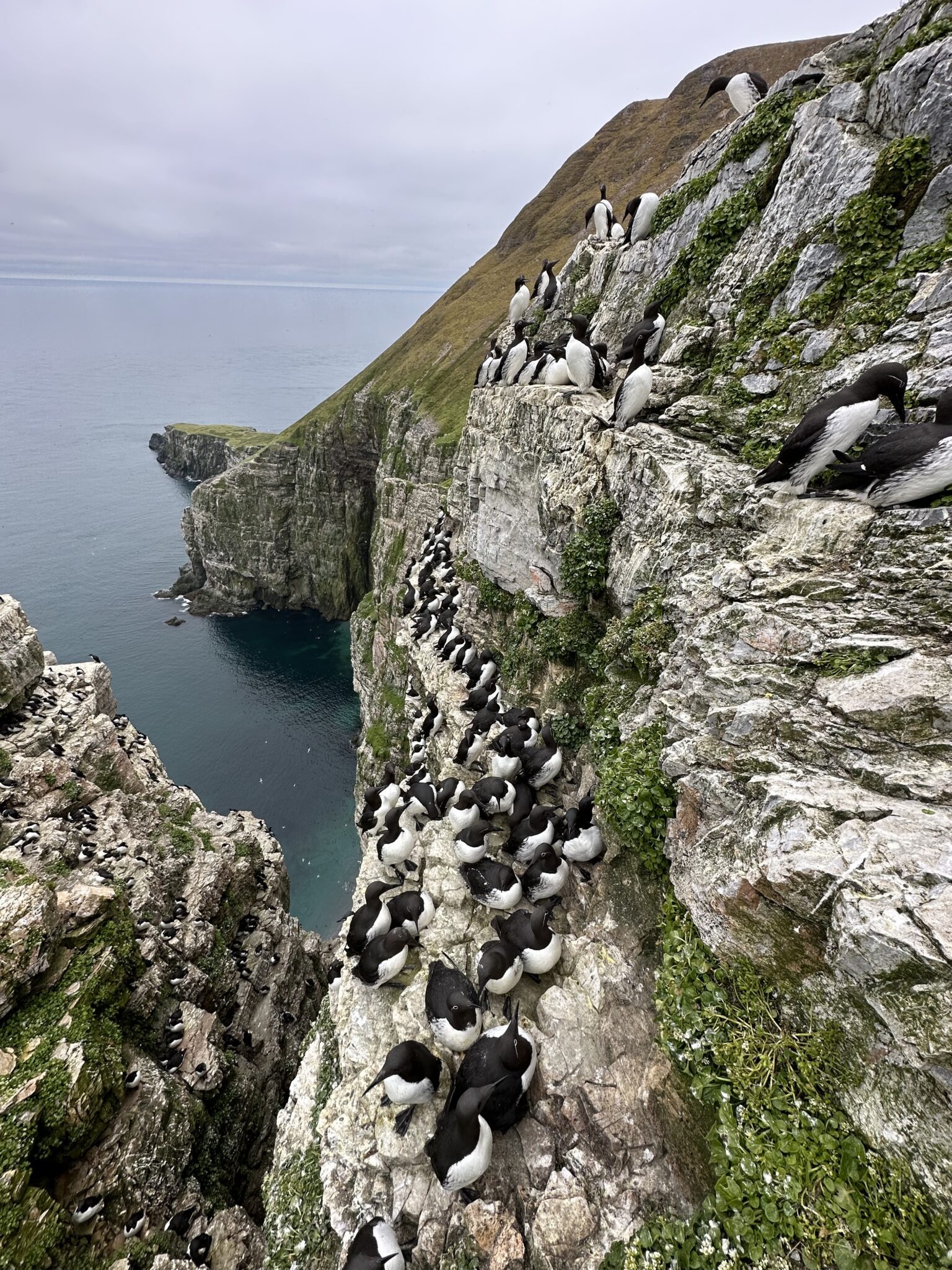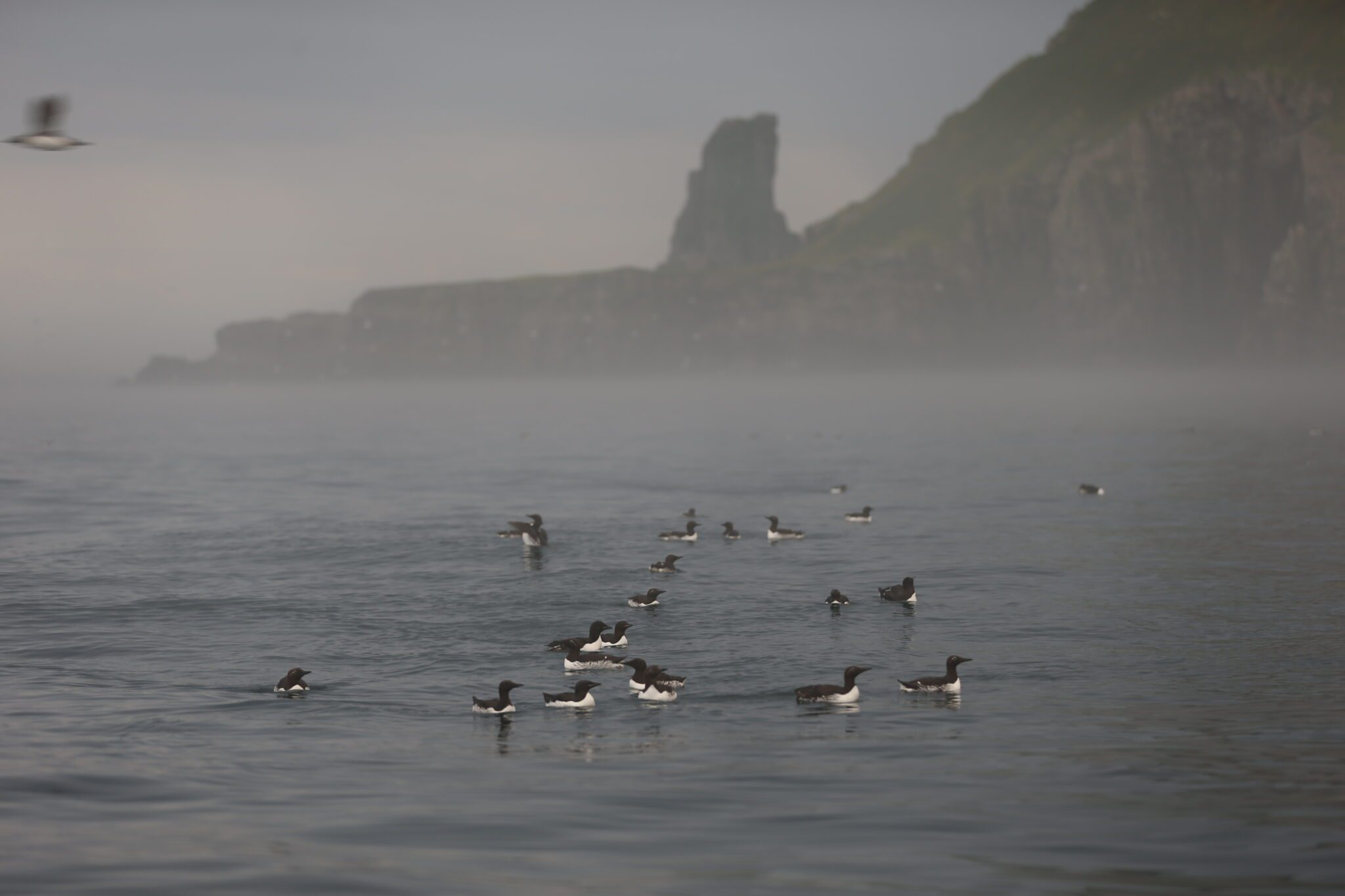Surprises in the swimming migration of guillemot chicks
Several species within the Alcini subfamily have a breeding strategy different from most bird species. After about one month on the breeding ledge, the chicks leave the colony with their fathers long before they can fly. The chicks then start a swimming migration away from the colony, but their migration routes have generally been unknown. A new study based on tracking data from the SEATRACK project now offers valuable insight into the swimming migration of guillemot chicks.
The big leap
Seabirds within the Alcini subfamily have a unique breeding strategy. Accompanied by the father, the offspring leaves the colony flightless, at only a quarter of adult body size, and fledge (become independent) out at sea. In a recent study, several hypotheses about this elusive second part of the breeding season, termed swimming migration, were tested for common guillemots Uria aalge and Brünnich’s guillemots U. lomvia.
Active swimmers
A total of 34 chicks were equipped with satellite-linked Argos Platform Transmitter Terminals (PTTs) at Bjørnøya, a major colony in the European Arctic. Half of the PTTs transmitted data, providing detailed insight into the chick migration. All 17 chicks with transmitting PTTs, presumably accompanied by their fathers, swam actively towards species-specific autumn staging areas, rather than passively drifting away from the colony. This is indicated by the fact that their swim speed was generally twice that of the surrounding surface currents.
Growing up among moulting parents
The chicks swam fastest during the first two days after leaving the colony. This coincided with the only time they actively crossed a current. They otherwise took advantage of available currents, while still swimming actively during the remainder of their migration. The swim migration ended in species-specific staging areas corresponding to areas used by breeding adults during their moulting period (as confirmed by complementary light-level logger tracking of adults), rather than being specific nursery areas.
Extending the definition of breeding areas
Migration duration correlated with distance, resulting in species-specific migration periods that were only a fraction of previously reported fledging periods out at sea. In turn, this indicates that not only the swimming migration route, but also the known adult autumn staging regions in fact must be considered as parts of the breeding areas. These findings have important implications for our understanding of population dynamics within the Alcini subfamily and the management of these species under multiple threats, while providing the foundation to investigate swimming migrations across their distributional range.
Read the article:

Photo © Hallvard Strøm

Photo © Hallvard Strøm
Contact person: Hallvard Strøm, Norwegian Polar Institute
